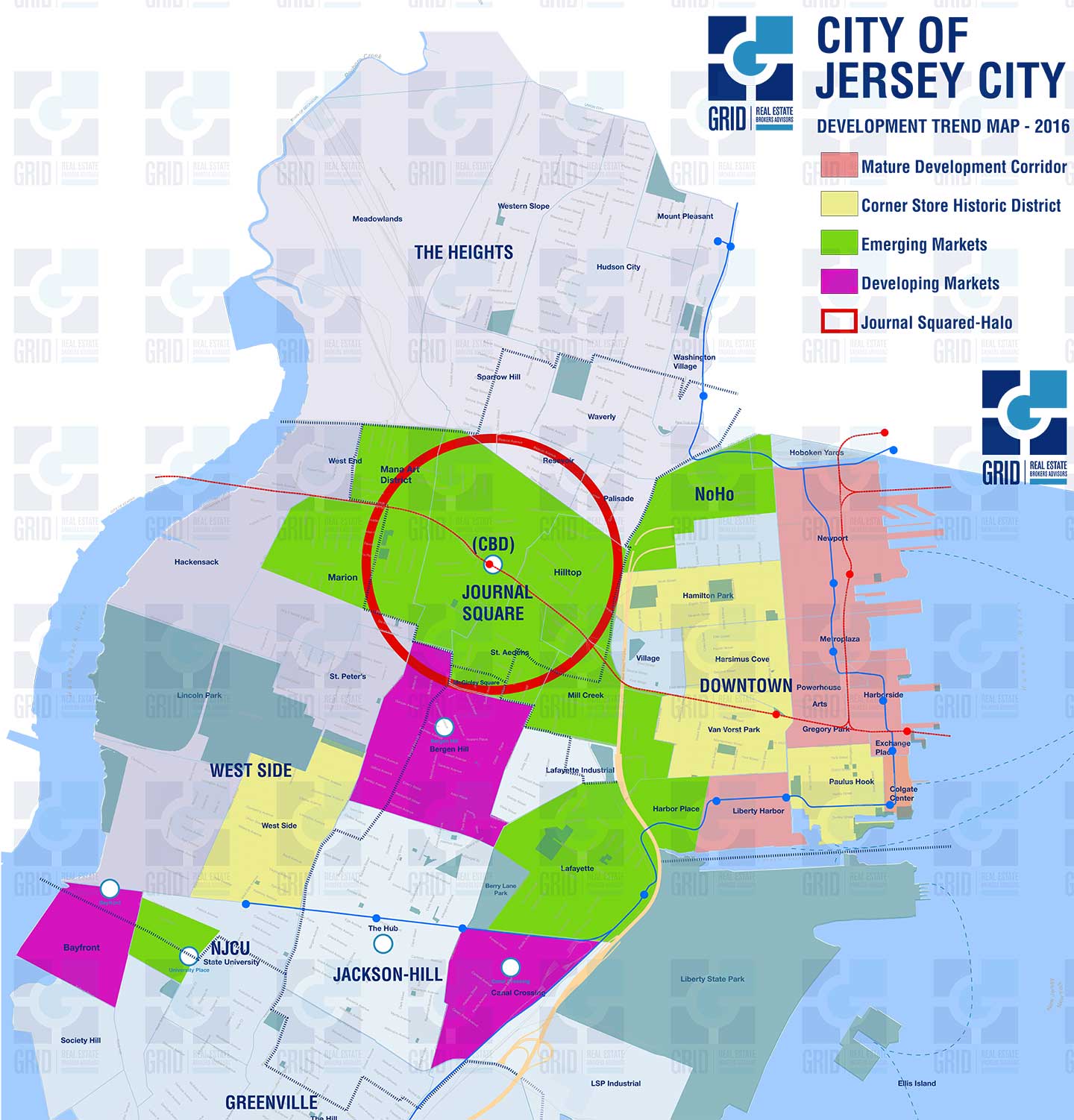As an accompaniment to the emerging markets panel at The Jersey City Summit, GRID Real Estate released a map depicting Jersey City development trends throughout the city.
GRID, which works closely with developers to find and acquire development sites as well as offering consulting services, has an on-the-ground understanding of what’s happening on the development front in each of Jersey City’s neighborhoods. They compiled this data and created a map to better understand where each neighborhood stands.
The map doesn’t cover every area of Jersey City, instead, it focuses on the areas that currently garner significant interest from developers and investors. It breaks down these areas into four categories: Mature Development Corridor, Corner Store Historic District, Emerging Markets, and Developing Markets.

Mature Development Corridor
This one is fairly straight forward. These were the areas first developed in Jersey City – which include Newport, Exchange Place, and Liberty Harbor. They feature a mix of stable established projects as well as a healthy pipeline of new developments.
Corner Store Historic District
These are the older, historic districts in the city where there are few large scale developments and more smaller infill projects. Large portions of these neighborhoods are covered by Historic District designations, which protects their historic integrity and significantly limits development potential.
Emerging Markets
These markets are areas with a healthy pipeline of projects in the works as well as projects already under construction or completed. Journal Square and its surrounding neighborhoods fall under the emerging markets designation as does Lafayette.
Developing Markets
Instead of lumping these neighborhoods together with emerging markets, GRID differentiates the developing from emerging by whether “shovels are in the ground”. The developing markets highlighted on the map – Bergen Hill, Canal Crossing, and Bayfront – all have large projects either approved or planned, but haven’t broken ground yet.
Journal Squared Halo
One other interesting indicator on the map is the red line designating the Journal Squared Halo. In an interview, GRID President Bob Antonicello explained the halo represents areas that have been directly impacted by the Journal Squared tower. What that means is, in these areas, typically, there’s a direct line of sight to the new tower. When speaking with investors and developers, instead of saying “the Journal Square PATH is half-a-mile away” they can now point to the tower as an indicator of the PATH’s location.
This along with the very visual evidence of major development within walking distance has resulted in rising property values within the halo. No longer is development in Journal Square a far off reality, it’s now dramatically apparent.
View the full size map here: Jersey City Development Trends Map